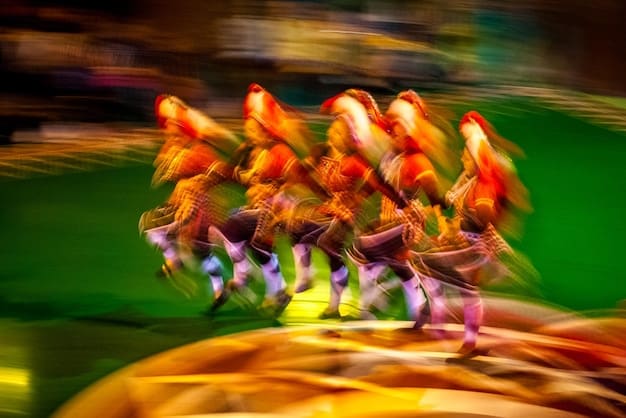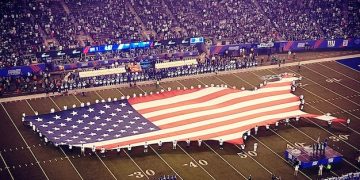Olympics 2028: New Sports Likely to Be Added to Program

As the world gears up for the Los Angeles 2028 Olympic Games, anticipation builds around potential new sport additions, with several dynamic and youth-oriented disciplines vying for a coveted spot to captivate global audiences and evolve the Olympic movement.
The Olympic Games, a beacon of athletic excellence and global unity, are constantly evolving. As Los Angeles prepares to host the 2028 Summer Games, one of the most talked-about aspects is the potential inclusion of new sports. While the core Olympic disciplines remain sacrosanct, the International Olympic Committee (IOC) consistently reviews and adds sports to keep the Games relevant, engaging new audiences, and reflecting contemporary culture. This process ensures that the Olympics remain a dynamic spectacle, attracting younger generations and embracing innovative athletic pursuits. The selection of new sports for Los Angeles 2028 is a complex, multi-faceted process, balancing tradition with the pursuit of fresh appeal and broader global participation. The anticipation around Olympics 2028: Which New Sports Are Likely to Be Added to the Program? is palpable, sparking discussions among athletes, federations, and fans worldwide.
The evolving Olympic program: A strategic overview
The Olympic Games, since their modern revival, have consistently adapted to the changing global landscape. This evolution isn’t merely cosmetic; it’s a strategic imperative for the International Olympic Committee (IOC) to maintain relevance, attract new demographic groups, and ensure financial viability. The process of adding new sports is a testament to this adaptive spirit, reflecting trends in sports participation, media appeal, and gender equality. Each host city, under the guidance of the IOC, has the opportunity to propose additional sports, allowing for a unique local flavor while aligning with the broader Olympic vision.
Understanding the criteria the IOC employs is crucial to predicting which sports might make the cut for Los Angeles 2028. Beyond simply being popular, prospective sports must demonstrate global reach, youth appeal, gender balance, cost-effectiveness, and compatibility with existing Olympic venues. The inclusion of sports like skateboarding, surfing, and sport climbing in recent Games highlights a deliberate shift towards urban and action sports, aiming to tap into a younger audience that values athleticism beyond traditional disciplines. This strategic foresight acknowledges that the future of the Olympic movement lies in its ability to connect with and inspire the next generation of athletes and fans.
Criteria for inclusion: What the IOC looks for
The IOC’s selection process is rigorous, scrutinizing various facets of a sport’s global appeal and operational viability. It’s not just about flashy appeal; there are deep practical considerations that shape these monumental decisions.
- Global Reach and Participant Base: The sport must be widely practiced across continents, with established international federations and competitive structures. This ensures broad representation and diverse talent pools.
- Youth Appeal: A critical factor in attracting new viewership and participation. Sports popular among younger demographics are increasingly favored.
- Gender Equity: Alignment with the IOC’s commitment to gender balance is paramount. Sports that offer equal opportunities for male and female athletes are highly valued.
- Infrastructure and Cost Efficiency: The ability to use existing venues or create temporary, low-cost facilities is a major advantage, reducing the financial burden on host cities.
Furthermore, the legacy aspect plays a significant role. The IOC prefers sports that can leave a lasting positive impact on the host city, whether through new facilities that can be repurposed or by fostering increased local participation in the sport. The balance between maintaining classical Olympic sports and integrating modern, dynamic disciplines is a continuous challenge, yet it is essential for the longevity and vitality of the Games. For Los Angeles 2028, this means a careful consideration of sports that not only entertain but also embody the Olympic spirit in contemporary ways.
The overarching goal for the IOC and the LA28 organizing committee is to craft a program that is both timeless and timely. This involves evaluating the inherent value a sport brings to the Games, its potential to generate global interest, and its capacity to enrich the overall Olympic experience for athletes and spectators alike. The decisions made regarding LA28 will undoubtedly shape the trajectory of the Olympic movement for years to come, solidifying its position as the premier global sporting event.
Baseball and softball’s potential return: A strong contender
Baseball and softball hold a unique position in the Olympic narrative. While immensely popular in specific regions, their Olympic tenure has been intermittent. After being featured in Tokyo 2020 (held in 2021), they were notably absent from Paris 2024. However, the prospect of their return for Los Angeles 2028 is incredibly strong, fueled by their immense popularity in the United States, which is the host nation. The passion for these sports in North America, particularly in professional leagues like MLB, provides a significant draw for local audiences and broadcasters, essential factors for a successful Olympic Games. The World Baseball Softball Confederation (WBSC) has been actively lobbying for their reinstatement, emphasizing their global reach beyond the U.S. and their established infrastructure.
The inclusion of baseball and softball would not only leverage existing passionate fan bases but also address key IOC criteria. Both sports boast extensive global participation, with strong federations across numerous countries. They also align well with gender equity goals, with softball being a prominent and exciting women’s discipline. Furthermore, Los Angeles has a plethora of world-class baseball and softball venues, which minimizes infrastructure costs—a critical consideration for any host city. This pre-existing infrastructure makes them a highly attractive option, streamlining logistical challenges and enhancing the overall spectacle.
Reasons for potential inclusion
The case for baseball and softball’s return to the Olympic program for LA28 is compelling, built on several practical and visionary arguments. These sports offer a unique blend of heritage and modern appeal that resonates with diverse audiences.
- Host Nation Popularity: As America’s national pastime, baseball, alongside softball, guarantees significant local interest and ticket sales, pivotal for the economic success of the Games.
- Established Infrastructure: Los Angeles is rich in suitable venues, from MLB stadiums to smaller, purpose-built fields, negating the need for new, costly construction.
- Global Fan Base: Beyond the U.S., baseball and softball are hugely popular in Japan, South Korea, Latin America, and other regions, ensuring strong international viewership.
- Television Appeal: Both sports translate well to television, offering compelling narratives, strategic depth, and high-stakes moments that captivate audiences.
The WBSC has also made significant strides in adapting the sport to the Olympic format, proposing shorter game durations and more dynamic rules to fit the multi-sport event schedule. Such adaptations demonstrate a commitment to making the sports more appealing within the Olympic framework. The return of baseball and softball would also satisfy a yearning among many Olympic traditionalists who value sports with deep historical roots and established competitive structures. Their re-inclusion would signify a powerful blend of tradition meeting modern athletic demand, positioning LA28 as a Games that honors its past while embracing popular contemporary interests. The decision will ultimately reflect a balance between broad global appeal, strategic financial considerations, and the unique cultural landscape of the host city.
Cricket’s Olympic ambitions: A global phenomenon
Cricket, a sport boasting a colossal global following, particularly in the Commonwealth nations, has long harbored Olympic ambitions. With over 2.5 billion fans worldwide, primarily concentrated in India, Pakistan, Australia, England, and South Africa, its inclusion could unlock an unprecedented viewership demographic for the Olympic Games. The International Cricket Council (ICC) has been diligently working to make cricket an attractive proposition for the IOC, focusing on the shorter, more dynamic Twenty20 (T20) format, which is better suited for the fast-paced Olympic schedule. This format ensures quick, engaging matches that can fit within the demanding multi-sport calendar, addressing concerns about game length often associated with traditional cricket formats.
The T20 format is played by a vast number of nations, making it a truly global sport from a participation perspective, aligning with the IOC’s desire for sports with widespread international reach. Its inclusion would also significantly boost the Olympic presence in South Asia, a region with a massive population that is deeply passionate about cricket but has historically had limited representation in some core Olympic events. The potential financial benefit from broadcasting rights and sponsorship in such a massive untapped market is undoubtedly a strong incentive for the IOC to consider cricket seriously for Los Angeles 2028.
Challenges and advantages for cricket
While cricket offers immense potential, its Olympic journey is not without its hurdles. The format, infrastructure, and competition structure are key considerations that need to be addressed to ensure a seamless integration into the Olympic program.
- Venue Requirements: Cricket fields require significant space, and while some are available in the US, especially around LA, ensuring sufficient high-quality facilities might be a challenge.
- Player Availability: The international cricket calendar is packed, and securing top players for an Olympic tournament would require careful coordination with existing leagues and tours.
- Global Understanding: While globally popular, cricket’s rules vary, and general comprehension outside its traditional strongholds might be less. However, the T20 format is more accessible.
- Broadcasting Appeal: T20 cricket is fast-paced and action-packed, making it highly suitable for TV and digital platforms, attracting a younger, more dynamic viewership.

Despite these challenges, the advantages cricket brings are substantial. Its established global fan base, significant commercial potential, and alignment with the IOC’s push for youth-centric, dynamic sports make it a formidable candidate. The sheer scale of its following, particularly in key emerging markets, could transform the Olympic viewership landscape, bringing new eyes and enthusiasm to the Games. The ICC’s proactive approach in proposing a tailored T20 format demonstrates their commitment to overcoming logistical obstacles and making cricket a viable and exciting addition to the Olympic program. The ultimate decision for LA28 will hinge on a careful weighing of these benefits against the practicalities of implementation, with the promise of unlocking a truly global spectacle.
Flag football: An american sensation with global potential
Flag football, a non-contact variant of American football, has rapidly emerged as a strong contender for inclusion in the Los Angeles 2028 Olympic program. Its appeal lies in its dynamic, fast-paced nature, which combines strategic gameplay with athleticism, all while minimizing the physical intensity associated with traditional tackle football. What makes flag football particularly attractive to the IOC is its emphasis on safety, making it accessible to a much wider range of participants, including women and youth, thereby aligning perfectly with objectives of inclusivity and broad participation. The sport requires minimal equipment, making it cost-effective to implement and play globally, contrasting sharply with the hefty infrastructure demands of tackle football.
The NFL, recognizing the immense global potential, has actively supported flag football’s Olympic bid, investing in its international growth and promoting its accessibility. This backing from a major professional league lends significant weight to the sport’s campaign, demonstrating strong organizational and financial support. Its inclusion would also offer the unique advantage of introducing a variant of American football to a global Olympic audience, capitalizing on the host nation’s cultural affinity for the sport without the high-impact concerns. Flag football’s straightforward rules and exciting plays translate well to television, promising engaging viewership figures, especially in the US and emerging markets.
The unique appeal of flag football
Flag football stands out amongst potential new Olympic sports due to its inherent characteristics that align seamlessly with the Olympic values of participation, accessibility, and modern sportsmanship. It offers a fresh perspective while tapping into a globally recognized sports foundation.
- Reduced Contact, Increased Safety: The lack of tackling makes it inherently safer, appealing to a broader demographic and reducing injury risks, which is a major concern for multi-sport events.
- Low Barrier to Entry: Minimal equipment and simpler rules contribute to its accessibility, allowing for widespread participation from grassroots to elite levels, appealing to nations with limited resources.
- Gender Parity and Inclusivity: Flag football is widely played by both men and women, often in mixed teams, showcasing real commitment to gender equality in sport.
- Dynamic and Spectator-Friendly: The fast pace, strategic maneuvers, and quick scoring opportunities make it highly entertaining for spectators, both live and on broadcast.
Furthermore, the agility, speed, and precision required in flag football highlight athletic attributes that resonate with the Olympic spirit. Its capacity to be played on various surfaces, often without specialized, expensive facilities, adds to its logistical appeal. The strong support from the NFL and its international federations further bolsters its case, providing the necessary operational and marketing muscle to ensure a successful Olympic debut. For Los Angeles 2028, flag football presents an opportunity to introduce a genuinely American-rooted sport in a format that is universally appealing and forward-thinking, embodying the modern direction of the Olympic Games. Its blend of traditional values with contemporary athleticism makes it a very strong candidate indeed for inclusion.
Lacrosse: A blend of tradition and dynamism
Lacrosse, often hailed as the “fastest game on two feet,” boasts a rich history, particularly in North America, where it originated with indigenous peoples. Its Olympic candidacy for Los Angeles 2028 is underpinned by its unique blend of athleticism, strategy, and cultural significance. While often seen as a niche sport, lacrosse has been experiencing significant international growth, with a growing number of federations and participating nations. The format being proposed for the Olympics is likely a streamlined version (e.g., ‘Sixes’ or beach lacrosse), designed for faster play and to fit within the demanding Olympic schedule, making it more appealing to the IOC and broadcasters.
The sport demands exceptional hand-eye coordination, speed, agility, and teamwork, attributes that perfectly align with the high standards of Olympic competition. Its dynamic nature, with constant transitions between offense and defense, offers an exciting spectacle for viewers. The cultural heritage of lacrosse, rooted in Native American traditions, adds a layer of depth and historical significance that few other modern sports can claim, potentially resonating with the IOC’s desire to showcase diverse global traditions through sport. The push for its inclusion for LA28 is also strengthened by the significant growth of women’s lacrosse, which showcases global participation and a commitment to gender equity, a critical criterion for Olympic sports.
Growing global appeal and heritage
Lacrosse’s journey towards potential Olympic status is propelled by its expanding global footprint and its compelling historical narrative. Its blend of ancient roots with modern dynamism makes it a uniquely interesting prospective addition.
- Indigenous Roots: Lacrosse is one of North America’s oldest team sports, with deep cultural and spiritual significance for various Native American tribes, offering a unique heritage narrative.
- Rapid International Growth: The sport is gaining traction in Europe, Asia, and Oceania, indicated by increasing federation numbers and international competition levels.
- High Intensity and Skill: The game’s fast pace and requirement for intricate stickwork, strategic positioning, and physical endurance make it a thrilling spectacle.
- Youth Engagement: Popular among high school and collegiate athletes in North America, highlighting its potential to engage younger audiences globally.

The World Lacrosse body has been proactive in promoting the ‘Sixes’ format, which reduces team sizes and shortens game times, making it more adaptable for multi-sport events like the Olympics. This format maintains the essence of the game while enhancing its appeal for a broader audience and simplifying venue requirements. Lacrosse also benefits from strong support in its traditional strongholds, providing a passionate fan base and athletic talent pool. For Los Angeles 2028, including lacrosse would not only celebrate a sport deeply entwined with American history but also showcase a globally growing, dynamic, and visually exciting competition. It represents a balance of honoring heritage while embracing the contemporary evolution of sport, making it a compelling candidate for Olympic glory.
Breakdancing: A new era of urban sports?
Breakdancing, officially known as breaking in Olympic contexts, burst onto the Olympic scene as a new sport for Paris 2024, captivating audiences with its unique blend of artistry, athleticism, and urban culture. Its provisional success in Paris sets a strong precedent for its potential inclusion in Los Angeles 2028. Breaking originated in the Bronx, New York, in the 1970s, making it a distinctly American art form that aligns perfectly with the cultural zeitgeist of a Los Angeles Games. Its inclusion reflects the IOC’s deliberate strategy to appeal to younger audiences by incorporating sports that are deeply embedded in youth culture and urban lifestyles. This move brings a fresh, dynamic energy to the traditionally formal Olympic program.
The appeal of breaking lies in its individualistic expression, incredible physical prowess, and raw energy. Competitors, known as B-boys and B-girls, showcase their skills through a series of dynamic power moves, intricate footwork, and unique freeze poses, all performed to a beat. The judging criteria emphasize technical skill, creativity, performance, and musicality, making it as much an art form as a sport. For LA28, breaking’s familiar cultural roots in the United States could generate significant local excitement and viewership, ensuring a vibrant and engaging atmosphere. Its relatively low infrastructure requirements are another significant advantage, as competitions can be held in versatile urban settings, reducing the need for costly, specialized venues.
Breaking’s compelling case for LA28
Breaking’s successful debut and its inherent characteristics make it a strong contender for continuation in the Olympic program beyond Paris. Its cultural resonance and modern appeal are significant assets for the Games.
- Youth and Urban Appeal: Directly targets a vital demographic, bridging the gap between traditional sports and modern cultural movements, fostering engagement with younger audiences.
- Artistic and Athletic Fusion: Blends extreme athleticism with artistic expression, offering a visually stunning and creatively rich spectacle that transcends traditional sporting boundaries.
- Global Accessibility: Practiced worldwide with minimal equipment, making it highly accessible and appealing to a diverse range of participants from different socio-economic backgrounds.
- Low Infrastructure Needs: Can be staged in various venues, from temporary outdoor setups to existing cultural centers, keeping costs low and flexibility high.
The energy and uniqueness of breaking provide a significant contrast to many traditional Olympic sports, adding diversity and a fresh perspective to the program. It embodies the modern Olympic spirit of inclusivity and dynamism, inviting new forms of physical expression onto the world stage. The popularity of street dance culture globally, amplified by social media, ensures that breaking already has a widespread, digitally native audience eager to see it on the biggest stage. Its success in Paris 2024 will undoubtedly serve as a robust test case, and all indicators point towards a strong chance of its continued presence in Los Angeles 2028, heralding a new era for urban sports within the Olympic movement. This commitment to fresh, culturally resonant disciplines is key to the Olympics’ ongoing relevance and appeal.
Emerging sports and future considerations
Beyond the front runners, several other emerging sports are constantly vying for a place in the Olympic spotlight, reflecting a growing global interest in diverse athletic endeavors. The International Olympic Committee (IOC) and host cities like Los Angeles are always on the lookout for disciplines that can further enhance the Games’ appeal, particularly among Gen Z and younger demographics. These sports often represent subcultures or recent athletic innovations that resonate with contemporary trends, pushing the boundaries of what constitutes an “Olympic sport.” The continuous evaluation ensures that the Olympic program remains vibrant and reflective of global sporting evolution, rather than stagnating with traditional offerings.
While some sports may not make the cut for Los Angeles 2028, their persistent efforts to gain inclusion underscore a broader trend: the Olympics are increasingly open to new forms of competition. This openness encourages federations to adapt and present their sports in formats that are suitable for the Olympic stage, emphasizing accessibility, safety, and spectator engagement. The discussions surrounding emerging sports also highlight the IOC’s commitment to innovation and its willingness to embrace disciplines that challenge conventional notions of athleticism. Ultimately, the decision for LA28 will set the tone for future Games, influencing which new sports continue to push for recognition and a chance to shine on the world’s biggest sporting stage.
Other strong contenders and dark horses
While baseball/softball, cricket, flag football, and breaking appear to be the most likely candidates, the Olympic selection process is full of surprises. Several other sports possess qualities that could make them viable options.
- Squash: Has long campaigned for inclusion, offering a fast-paced indoor racket sport with global reach and minimal venue requirements.
- Karate: Was included in Tokyo 2020 but dropped from Paris 2024. Its future depends on specific host city preferences and global appeal at the time.
- Motorsport/Esports: With the rising global popularity of virtual sports and simulated motorsport, discussions about their Olympic integration are ongoing, representing a radical shift in scope.
- Padel: One of the fastest-growing racket sports globally, particularly strong in Spain and Latin America, its compact court size and dynamism make it an interesting option.
The IOC’s focus on achieving greater gender equality and ensuring cost-effective Games also influences these decisions. Sports that are easily adaptable, do not require extensive new infrastructure, and promote diverse participation opportunities tend to fare better. The strategic choices for Los Angeles 2028 will not only define the character of those Games but also potentially establish new pathways for future Olympic inclusions. This ongoing evolution is critical for the long-term relevance and broad appeal of the Olympic movement, ensuring it continues to inspire and unite generations through the power of sport and innovative athletic pursuits.
| Key Sport | Brief Outlook for LA28 |
|---|---|
| ⚾🥎 Baseball/Softball | Highly likely due to host nation popularity, existing venues, and global fan base. |
| 🏏 Cricket (T20) | Strong contender with immense global following and T20 format appeal for mass viewership. |
| 🏈 Flag Football | Gaining momentum due to safety, low cost, youth appeal, and NFL backing. |
| 🤸 Breaking | Proven success in Paris 2024, strong youth and urban cultural connection, low infrastructure needs. |
Frequently Asked Questions about LA28 New Sports
The host city proposes new sports to the International Olympic Committee (IOC). The IOC then reviews these proposals based on criteria like global popularity, youth appeal, gender equality, and venue requirements. This symbiotic relationship ensures relevance and local flavor while adhering to Olympic values.
Paris 2024 opted for a different set of new sports, reflecting the local organizing committee’s preferences and strategic choices to engage French audiences. Sports like breaking and sport climbing were chosen, emphasizing urban and youth culture relevant to the Parisian setting, impacting baseball and softball’s short absence.
The Twenty20 (T20) format of cricket is the most likely candidate for Olympic inclusion. This shorter, more dynamic version of the game is ideally suited for the tight Olympic schedule, ensuring exciting matches that can be completed within a few hours, enhancing broadcast appeal.
Flag football is a non-contact version, where “tackles” are made by pulling flags from a ball carrier’s belt. This greatly reduces injury risk, requires less equipment and infrastructure, and fosters broader participation, making it a safer and more inclusive option for the Olympic Games.
Breaking’s inclusion for Los Angeles 2028 is highly probable following its debut in Paris 2024. Its strong youth appeal, global following, and alignment with modern cultural trends position it favorably for continued presence, especially in a culturally diverse city like Los Angeles.
Conclusion
The selection of new sports for the Los Angeles 2028 Olympic Games represents a pivotal moment in the ongoing evolution of the Olympic movement. The choices made will reflect a delicate balance between tradition and innovation, aiming to captivate existing fans while drawing in new generations. Sports like baseball/softball, cricket, flag football, and breaking stand out as strong contenders, each bringing unique strengths in terms of global appeal, youth engagement, and logistical feasibility. This dynamic process ensures the Games remain relevant, vibrant, and a true reflection of the constantly shifting landscape of global athleticism and cultural expression. The LA28 Games promise to be a fascinating glimpse into the future of sports on the grandest stage.





